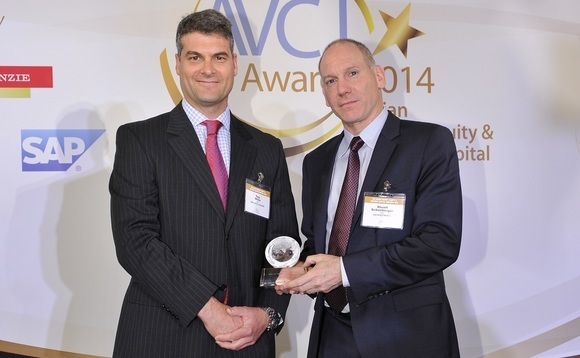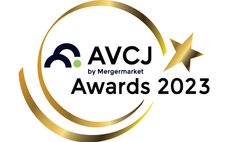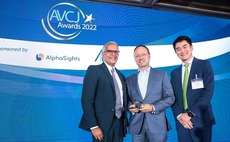
AVCJ Awards: Deal of the Year - Large Cap: Nanfu Battery

CDH Investments’ acquisition of Nanfu Battery is a rare carve-out from a multinational in China, and an even rarer example of a PE firm returning to back a former portfolio company
When Procter & Gamble (P&G) announced plans to offload more than half of its brands in a bid to boost profitability, Asia's private equity community pored over the assets to see what might be carved out. Yet CDH Investments' acquisition of Chinese alkaline battery maker Fujian Nanping Nanfu Battery was not contested. The GP had history on its side.
CDH is understood to have bought P&G's entire 78.8% stake in Nanfu for close to $600 million. It is reuniting with a management team it first backed more than 15 years ago, before the business was sold to Gillette, which was subsequently acquired by P&G. Corporate carve-outs from multinationals are a rarity in Chinese private equity; given the relative youth of the industry, a firm returning to invest in a former portfolio company is even rarer.
When CDH approached P&G this wasn't the transaction it had in mind. "The conversations started at a fairly high level with us letting P&G dictate the direction and narrowed over time, but the one category we knew we could work on relatively easily was household products," says Thomas Lanyi, a director at the PE firm. "We were aware of the ownership but we didn't go in with a specific proposal for Nanfu."
A number of potential transactions were considered, but once Nanfu - China's largest manufacturer of alkaline batteries and a top five player globally - emerged as a viable target, CDH knew it had a competitive edge. Relations between the PE firm and Nanfu management were maintained after the initial exit and they knew they could work together. This also gave P&G confidence that a deal would get done.
The beginning
The original investment in Nanfu may well have been the first-ever PE buyout of a Chinese state-owned enterprise. It was the late 1990s and the CDH team still comprised the captive private equity unit of China International Capital Corporation (CICC). They acquired a controlling interest in Nanfu alongside Morgan Stanley Private Equity Asia, with GIC Private and NIBC Asia coming in as co-investors.
Morgan Stanley was at the time a substantial shareholder in CICC and their respective PE units collaborated on several deals. GIC was also familiar with the CICC team. NIBC Asia was the Singapore office of Dutch bank NIBC's private equity arm, and it got involved through GIC.
"The best way for me to establish a network in Asian private equity was to go and see Temasek Holdings and GIC," says Ernest Lambers, now a partner at placement agent Liberty Global Partners but then head of the NIBC Asia. "I spoke to the GIC representative in Beijing and they were looking at Nanfu. At that point there were not large pools of capital available in China so they wanted my support. We spent quite a bit of time on due diligence and this resulted in a proposal to acquire a majority interest in the company across two stages."
The second stage took place after CICC PE team spun out in 2002 and became CDH. GIC was one of four anchor investors in the new firm's $100 million debut fund.
NIBC had also undergone change. Dutch pension funds ABP and PGGM acquired the bank and its private equity business and repurposed the latter into an independent manager for their own allocations to the asset class. In 2003 it was renamed AlpInvest Partners and Lambers was put in charge of the emerging markets private equity program. AlpInvest also backed CDH's first fund.
By the time the second stage of the Nanfu investment was completed, the company was one of the largest battery manufacturers in China, although still a fraction of its current size. Lambers was attending board meetings on a quarterly basis - the journey from the airport to the factory in Nanping city took about three hours so meetings would start in the afternoon and run into the following day - and he recalls being impressed by the management team.
"They had acquired some Japanese equipment for the manufacturing plants. They knew what was required to make a good company and they knew how to market the product," he says. "The financial investors helped in terms of marketing and expanding into other provinces. One of the differentiating factors to Duracell was that you could buy Nanfu batteries individually. With Duracell you had to buy a whole pack and that was quite a lot of money for Chinese consumers back then."
Gillette, Duracell's parent, was struggling to penetrate the Chinese market. It had to build a distribution network from scratch and it lacked lower-priced brands below the premium Duracell product. Nanfu was therefore a logical M&A target and a deal duly happened in 2003. According to reports at the time, Nanfu had annual revenues of $84 million.
Gillette bought out the private equity investors in full. The rest of Nanfu was - and still is - held by local government interests.
Fast forward
Nanfu now produces more than 1.2 billion batteries per year and generates annual revenues well in excess of $300 million. Ninety percent of its business is domestic, channeled through an estimated two million points of sale running all the way from tier-one to tier-four cities. The company is estimated to account for over 70% of sales of legitimate alkaline batteries in China. It outsells local peers such as Twin Deer, GP Battery and White Elephant, while foreign players like Duracell still focus on the premium segment and have a correspondingly small share.
Size apart, the business was an appealing corporate carve-out for three reasons. First, it had been run as a stand-alone operation within P&G - so it could be carved out quite cleanly - and the management team was staying in place. P&G had never sold an asset to a Chinese buyer before, which presented something of a challenge in terms of familiarity, but CDH addressed this by assembling a working group comprising members of its China deal team and general team members with international experience.
Second, Nanfu is fairly straightforward, cash-generative business. "It is not the kind of category where you push hundreds of millions of dollars into R&B or capital expenditure to continuously come up with the next big thing - and that is partly why we like it," says Lanyi. "This is a buyout transaction and we have applied some leverage, so we needed the business to have strong, stable, free cash flows and from that perspective it is extremely suitable."
Third, the primary growth drivers of the business are reassuringly secular: rising disposable incomes prompting higher demand for battery-powered electronic devices, from air conditioners to DVD players to flashlights to toys; and the shift from carbon-zinc to alkaline batteries, which are considerably more efficient.
There is a clear developed versus developing markets split in terms of product preference, with the US and Europe at least 90% alkaline, while in China the balance is tipping in favor of alkaline but not by huge margin. There is a large differential in price and an even larger differential in performance between the two battery types. As with other consumer product categories, rising affluence in China is expected to see more people pay a premium for quality.
"As the consumer becomes more educated and financially capable, he will switch from carbon-zinc to alkaline batteries because the price-performance differential is favorable as long as you can afford to pay the price," Max Hui, also a director at CDH, explains. "Nanfu has been putting a lot of effort into making consumers understand that its batteries last significantly longer - we are talking 8-10 times longer - than carbon-zinc alternatives. This conversion drives growth both in volume and revenue terms."
Lanyi adds that Nanfu's long-term brand equity is also a function of consumer loyalty. "Ultimately it comes down to people wanting a solid product and trusting the brand," he says. "The slogan Duracell uses in the US is ‘trusted everywhere' and I think a similar logic applies for Nanfu's consumers. People want these batteries to last and they don't want them to leak, so they go for trusted products."
This may be the first time CDH has bought a business it previously owned, but the private equity firm has a record of working with management teams on multiple occasions.
There are elements of this approach in the firm's dairy industry exposure. Over the past decade, CDH and KKR have invested in China Mengniu Dairy, China Modern Dairy and most recently Asia Dairy. This string of deals is the product of accumulated experience and industry contacts; at each stage pre-existing relationships with management teams have proved invaluable.
Another example would be Belle International, a women's shoe retailer that CDH took public in 2007. Last year the PE firm teamed up with Belle to jointly acquire a controlling stake in apparel brand Baroque Japan and roll out the business in China.
"Teaming up with people with whom we have long-standing partnerships, whether previous portfolio companies or not, has worked well for us," Hui says. "We will not deliberately pursue this strategy. Each investment is evaluated on a standalone basis but one of the first criteria we look at it is whether we trust the people involved. People we have worked with before we can definitely trust but we are obviously open to working with new partners as well."
Latest News
Asian GPs slow implementation of ESG policies - survey
Asia-based private equity firms are assigning more dedicated resources to environment, social, and governance (ESG) programmes, but policy changes have slowed in the past 12 months, in part due to concerns raised internally and by LPs, according to a...
Singapore fintech start-up LXA gets $10m seed round
New Enterprise Associates (NEA) has led a USD 10m seed round for Singapore’s LXA, a financial technology start-up launched by a former Asia senior executive at The Blackstone Group.
India's InCred announces $60m round, claims unicorn status
Indian non-bank lender InCred Financial Services said it has received INR 5bn (USD 60m) at a valuation of at least USD 1bn from unnamed investors including “a global private equity fund.”
Insight leads $50m round for Australia's Roller
Insight Partners has led a USD 50m round for Australia’s Roller, a venue management software provider specializing in family fun parks.








